Real Christmas trees: Which one is right for you?
Consumers have an array of different Christmas trees to choose.

Michigan farms and tree lots offer an array of great Christmas tree choices, and consumers that want a real tree will be able to find one. Whether you look for a pre-cut tree at a local tree lot or bundle up the family for the choose-and-cut experience, you will find a wide variety of tree types that offer something for everyone.
How do I find a real tree?
As with most things, shopping early will ensure the best selection. If your holiday tradition is to put the tree up closer to Christmas day, you can store your tree with its cut end in water in your garage or other protected, unheated space until you are ready to move it into the house. (See “Making your real Christmas tree last through the holidays.”) Consumers will also have an easier time finding a real tree if they are willing to expand the menu of trees they choose from. Michigan Christmas tree growers produce a diverse range of Christmas tree types, and this might be the year to consider something different for your holiday tradition.
To help you pick the perfect tree, Michigan State University Extension has developed a description of the main types of trees grown in Michigan:
- Fraser fir
- Scots pine
- Douglas fir
- Blue spruce
- Black hills spruce
- White pine
- Balsam fir
- Concolor fir
- Korean fir
- Canaan fir
The “tried and true” Christmas trees
These Christmas tree species can be found at nearly every choose-and-cut farm or tree lot.
Fraser fir
Fraser fir continues to increase in consumer popularity and for good reason. Fraser fir has blue-green needles with silvery undersides. The branches are strong and stiff and hold up well to heavy ornaments. The trees have a pleasant scent and needle retention is excellent. Fraser fir has become the premier Christmas tree for many households. For more pictures and information on this species, see MSU‘s Fraser fir Youtube video.

Scots pine
Scots pine is the tree species that has historically defined the Michigan Christmas tree industry and is still a favorite for traditionalists. Scots pines are dense trees with dark-green needles. Stiff branches hold up well to ornaments and needle retention is excellent. Scots pine is also a more economical choice. For more pictures and information on this species, see MSU‘s Scots pine YouTube video.
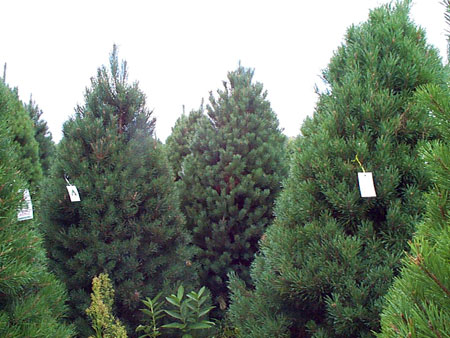
Douglas fir
Douglas fir is a dense tree with soft, light green needles. You’ll need to stick with lighter-weight ornaments since the branches are not as stiff as some other species. This is another good choice for budget-conscious consumers. For more pictures and information on this species, see MSU‘s Douglas-fir YouTube video.
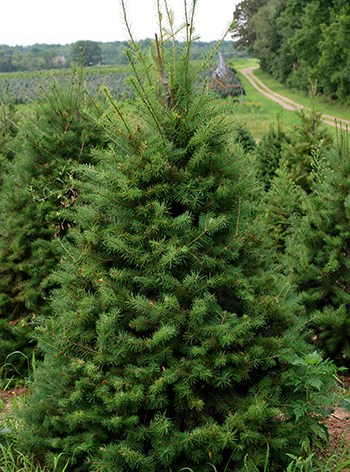
Blue spruce
Blue spruce remains a popular Christmas tree because of its bright blue color. Branches are stiff and hold ornaments well. Blue spruce needles are quite sharp, so be sure to wear gloves and long-sleeves when handling. While the needles may make the tree hard to handle, some people choose blue spruce to keep pets away from the tree. For more pictures and information on this species, see MSU‘s blue spruce YouTube video.

Black hills spruce
Black hills spruce have needles that are shorter and softer than Colorado blue spruce. Black hills spruce have excellent color and have a very traditional Christmas tree appearance. Branches are stiff and hold up well to ornaments.
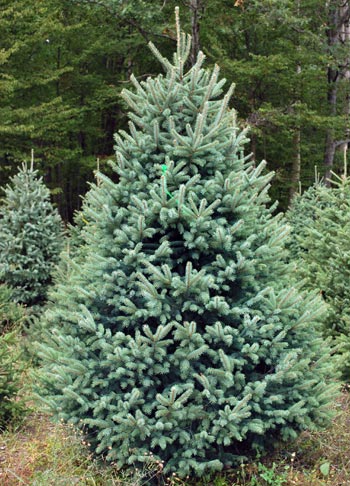
White pine
White pine is one of two Michigan native conifers commonly used for Christmas trees, along with balsam fir. This is a dense tree with soft, green needles. This tree will require light-weight ornaments as the branches are not particularly strong. For consumers that have a high ceiling and want a larger tree, white pine can be an economical choice. For more pictures and information on this species, see MSU‘s white pine YouTube video.
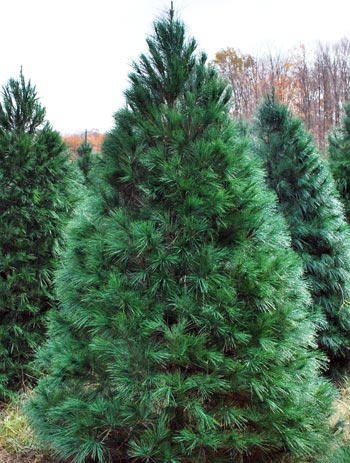
Balsam fir
Balsam fir has long been a preferred species for many consumers because of its strong Christmas tree scent. It has dark green needles and excellent form.
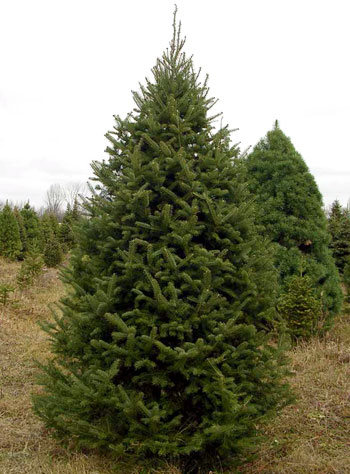
Concolor fir
Concolor fir have longer needles than many other fir trees and they may be as blue as a blue spruce. The big draw for this species, however, is the strong, citrus-like scent. For more pictures and information on this species, see MSU‘s concolor fir YouTube video.
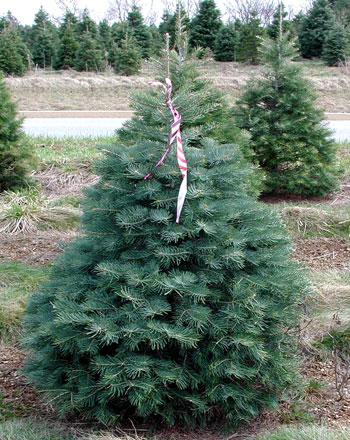
Up and coming varieties of Christmas trees
In addition to the traditional species mentioned above, Michigan growers continue to add species to their mix. For more information on other lesser-known trees, see "Christmas trees for connoisseurs: Try an exotic species this year."
Korean fir
Korean fir is native to Asia, as noted by the name, but grows well in our climate and soil. It has dark green needles with striking silvery undersides. The form and unique texture add to this species’ appeal. For more pictures and information on this species, see MSU‘s Korean fir Youtube video.
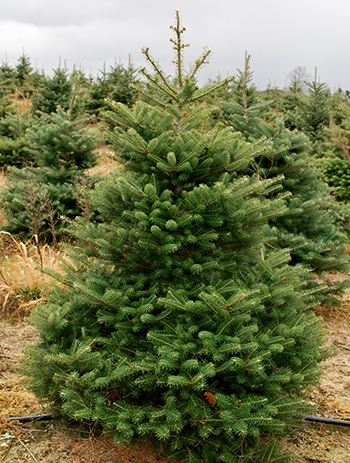
Canaan fir
Canaan fir combines many of the characteristics of balsam fir and Fraser fir. It is sometimes described as a hybrid between the two, but is actually a specific seed source of balsam fir from the Canaan Valley of West Virginia. For more pictures and information on this species, see MSU‘s Canaan fir Youtube video.
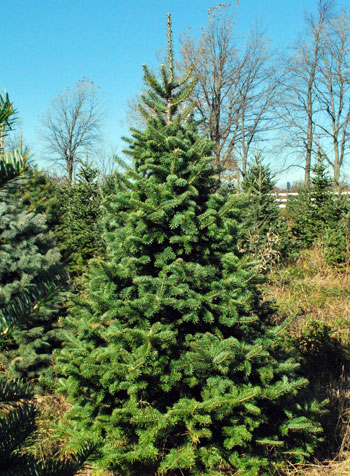
Want to find a Christmas tree farm near you? Visit the Michigan Christmas Tree Association website to see choose and cut farms, retail lots, and wholesale farms in your area!
More information on selecting and caring for your Christmas tree from MSU Extension
Articles
- Tips for success with your first real Christmas tree
- Christmas trees for connoisseurs: Try an exotic species this year
- Making your real Christmas tree last through the holidays
- Living Christmas trees: Another real tree option
- Why is my Christmas tree beginning to grow?



 Print
Print Email
Email




